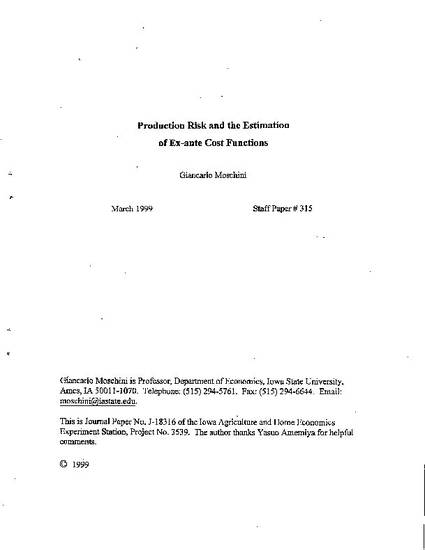
Article
Production Risk and the Estimation of Ex-ante Cost Functions
Economic Staff Paper Series
Document Type
Report
Publication Date
3-1-1999
Number
315
Disciplines
Abstract
Following the pioneering work of Shephard (1953), Diewert (1971) and McFadden (1978), the cost function approach has proven very useful and popular in applied production studies. Insofar as the hypothesis of cost minimization is correct, estimating a cost function is usually deemed preferable to estimating a primal specification of the technology because, by using input prices instead of input quantities on the right-hand side of estimating equations, one removes a potential source of simultaneous equation bias. Specifically, in the cost function framework input choices are modeled as a function of input prices and the output level. But, as emphasized in the recent article by Pope and Just (1996), a problem then arises when the , production technology is inherently stochastic. Such a case is very important in agricultural and environmental production models, where climatic and pest factors outside of the producer's control affect realized output in a nontrivial fashion. When producers make their input choices prior to the resolution of this production uncertainty, then the standard cost function specification (which is conditional on realized output level) is not relevant.
Published As
This report is published in Journal of Econometrics, Vol. 100, No. 2, February 2001, pp. 357-380
Citation Information
GianCarlo Moschini. "Production Risk and the Estimation of Ex-ante Cost Functions" (1999) Available at: http://works.bepress.com/giancarlo-moschini/35/
